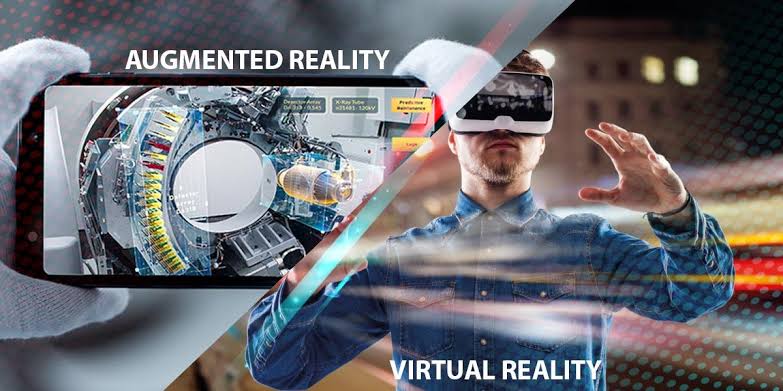Explore how computer vision techniques drive the immersive experiences in Virtual Reality (VR) and Augmented Reality (AR). Learn about motion tracking, depth sensing, object recognition, and spatial mapping, and discover the challenges and future directions in these transformative technologies.
Techniques for Immersive Experiences: Using Vision in Virtual Reality and Augmented Reality.
Introduction
Virtual Reality (VR) and Augmented Reality (AR) stand out as realms in technology offering experiences that seamlessly merge the physical and digital realms. These innovations utilize vision techniques to craft captivating and lifelike environments and interactions. To fully comprehend the functioning and potential applications of VR and AR in areas like gaming, entertainment, education and healthcare it's crucial to grasp the underlying vision methodologies.
Diving into the Basics of VR and AR
Virtual Reality immerses users in a realm through VR headsets that provide a 360 degree interactive experience. This realm can vary from simulations to imaginative landscapes all created by computers. On the hand Augmented Reality superimposes information onto the real world enhancing users perception of their surroundings with added layers of information or interactive features. AR is commonly experienced through devices such, as smartphones, tablets or AR glasses.
Both virtual reality (VR) and augmented reality (AR) heavily rely on vision techniques for their functionality. Computer vision encompasses the use of algorithms and technologies that enable computers to interpret and comprehend information from the surrounding world. In the realms of VR and AR computer vision plays a role, in scene rendering user tracking and the seamless integration of content with the real environment.
When it comes to reality computer vision is primarily employed for tracking user movements and creating immersive settings. A key method used is tracking which involves capturing and analyzing how a user moves within the virtual space. This is accomplished through a combination of sensors and cameras integrated into the VR headset or through external tracking devices. These sensors monitor head movements, hand gestures and body positions enabling the VR system to adjust the virtual environment in real time based on the users actions.
Another important method in creating realistic virtual environments is depth sensing. This technique uses cameras or sensors to measure how far apart objects are in the virtual space. Depth sensing plays a role in crafting 3D scenes and ensuring that virtual objects interact accurately with each other and the user. It often utilizes technologies like vision, where multiple cameras capture images from angles to estimate depth or structured light, where a light pattern is projected onto the scene to analyze the shape and distance of objects.
Rendering techniques are also crucial for virtual reality experiences. High quality rendering makes sure that environments look realistic and immersive. This involves adding textures, lighting effects and shadows that resemble real world conditions. Methods like ray tracing, which simulates how light interacts with surfaces, are employed to achieve rendering, enhancing the feeling of immersion and authenticity in VR settings.
Computer vision techniques play a role, in augmented reality.
In the realm of Reality technology computer vision methods play a role in seamlessly integrating digital elements into the real world. A key approach involves recognizing objects enabling AR systems to identify and monitor objects in the users surroundings. This process utilizes processing algorithms that examine features like shapes, colors and textures to match objects with predetermined digital content. For instance an AR application could detect a book on a surface and superimpose additional information or animations related to that book.
Another crucial technique is mapping which entails constructing a three dimensional representation of the environment. This map serves as a guide for accurately placing and anchoring content in the real world. Methods such as simultaneous localization and mapping (SLAM) are employed to continuously refresh the map as the user, moves. SLAM integrates data from sensors and cameras to create a map of the surroundings while also tracking the users position within it.
In augmented reality (AR) there are two methods for blending content with the real world; marker based tracking and markerless tracking. Marker based tracking relies on markers like QR codes or specific patterns that the AR system recognizes to trigger the presentation of content. On the hand markerless tracking doesn't need markers. Instead utilizes features in the environment such as surfaces and edges to position digital content.
Challenges and Future Directions
Despite the progress made, in vision for virtual reality (VR) and augmented reality (AR) there are still some hurdles to overcome. In VR the challenge lies in striking a balance between realism and immersion while keeping latency low. Any delays in rendering or tracking can disrupt the experience and potentially cause discomfort. On the hand in AR ensuring a seamless and stable blend of content with the real world proves difficult, in environments that are dynamic or cluttered.
Looking ahead the future of VR and AR research holds promise for advancements in sensor technology. More advanced algorithms for processing and improved techniques for merging virtual and real world elements. Machine learning and artificial intelligence are expected to play a role, in enhancing vision methods making VR and AR experiences even more engaging and user friendly.
Conclusion
Virtual Reality (VR) and Augmented Reality (AR) are changing the way we engage with content by creating experiences that merge the virtual and physical realms. The use of vision plays a role in these technologies allowing for tracking realistic visuals and smooth incorporation of information. With ongoing technological progress the possibilities for VR and AR in fields are set to grow providing fresh and creative methods to enrich our interactions with both the digital and tangible environments.
